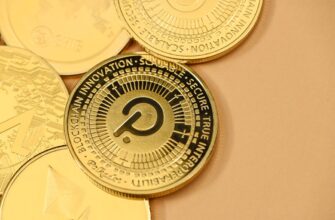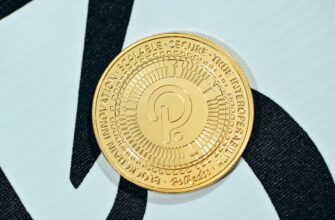- Understanding RC-20 Ethereum: The ERC-20 Token Standard Explained
- How ERC-20 Tokens Revolutionized Ethereum’s Ecosystem
- Top 5 Benefits of the ERC-20 Standard
- Creating Your Own ERC-20 Token: A Simplified Process
- Dominant ERC-20 Tokens Shaping Crypto Markets
- ERC-20 vs. Competing Token Standards
- Frequently Asked Questions (FAQ)
- Is “RC-20” the same as ERC-20?
- Can ERC-20 tokens be mined?
- What’s the cost to create an ERC-20 token?
- Are ERC-20 tokens secure?
- Can ERC-20 tokens work on other blockchains?
- The Future of ERC-20 in Ethereum’s Evolution
Understanding RC-20 Ethereum: The ERC-20 Token Standard Explained
When searching for “RC-20 Ethereum,” you’ve likely encountered a common misspelling of the revolutionary ERC-20 token standard on the Ethereum blockchain. ERC-20 (Ethereum Request for Comment 20) is the technical protocol that enables developers to create fungible tokens – digital assets with identical value and properties. These tokens power decentralized applications (dApps), facilitate crowdfunding via ICOs, and form the backbone of DeFi ecosystems. While “RC-20” isn’t an official term, this guide clarifies the ERC-20 standard’s mechanics, benefits, and real-world impact.
How ERC-20 Tokens Revolutionized Ethereum’s Ecosystem
Proposed by Fabian Vogelsteller in 2015, ERC-20 established a universal rulebook for tokens on Ethereum. Before its adoption, each token operated with unique code, causing compatibility nightmares for wallets and exchanges. The standard mandates six core functions:
- totalSupply(): Reveals the token’s maximum circulation
- balanceOf(): Checks a wallet’s token balance
- transfer(): Moves tokens between addresses
- transferFrom(): Enables third-party transfers (e.g., for exchanges)
- approve(): Sets spending allowances for dApps
- allowance(): Checks authorized spending limits
This interoperability sparked an explosion of innovation: Over 500,000 ERC-20 tokens exist today, collectively valued at hundreds of billions of dollars.
Top 5 Benefits of the ERC-20 Standard
- Seamless Integration: Wallets like MetaMask automatically support any ERC-20 token, eliminating custom coding.
- Exchange Compatibility: Major platforms (Coinbase, Binance) easily list compliant tokens.
- dApp Interoperability: Tokens work across DeFi protocols like Uniswap and Aave without modification.
- Reduced Development Costs: Open-source templates (OpenZeppelin) cut token creation time to hours.
- Enhanced Liquidity: Standardization enables efficient trading and price discovery.
Creating Your Own ERC-20 Token: A Simplified Process
Deploying an ERC-20 token requires minimal coding expertise:
- Install development tools: MetaMask, Remix IDE, and Node.js
- Use OpenZeppelin’s audited contracts for security
- Customize parameters: Token name (e.g., “RC20Demo”), symbol (RCD), and supply
- Test functionality on Ethereum testnets like Goerli
- Deploy to Ethereum Mainnet (cost: ~$50-$200 in ETH gas fees)
Note: Always audit smart contracts through firms like CertiK before launch.
Dominant ERC-20 Tokens Shaping Crypto Markets
- Tether (USDT): $110B+ market cap stablecoin
- Chainlink (LINK): Oracle network for real-world data
- Uniswap (UNI): Leading decentralized exchange governance token
- Shiba Inu (SHIB): Meme token with $5B+ valuation
- Maker (MKR): Governance for the DAI stablecoin system
ERC-20 vs. Competing Token Standards
While ERC-20 dominates, newer standards address its limitations:
| Standard | Key Advantage | Use Case |
|---|---|---|
| ERC-721 | Non-fungible tokens (NFTs) | Digital art, collectibles |
| ERC-1155 | Mixed fungible/non-fungible | Game items, batch transfers |
| ERC-777 | Enhanced transaction features | Advanced DeFi applications |
Frequently Asked Questions (FAQ)
Is “RC-20” the same as ERC-20?
No – “RC-20” is a common misspelling. The correct term is ERC-20 (Ethereum Request for Comment 20).
Can ERC-20 tokens be mined?
Tokens themselves aren’t mined. They’re created during deployment, while Ethereum (ETH) mining secures the network.
What’s the cost to create an ERC-20 token?
Development can cost $0 using open-source tools, but Ethereum gas fees for deployment range from $50-$200 depending on network congestion.
Are ERC-20 tokens secure?
The standard is secure, but vulnerabilities can exist in custom implementations. Always use audited code from trusted sources like OpenZeppelin.
Can ERC-20 tokens work on other blockchains?
Yes – via “wrapped” versions (e.g., wETH on Polygon) or cross-chain bridges, though native functionality is exclusive to Ethereum.
The Future of ERC-20 in Ethereum’s Evolution
Despite newer standards, ERC-20 remains foundational to Ethereum’s $400B+ ecosystem. With Ethereum’s transition to proof-of-stake reducing energy use by 99.95%, ERC-20 tokens now operate more sustainably. Upcoming upgrades like proto-danksharding will further slash transaction costs, cementing ERC-20’s role in decentralized finance, gaming economies, and real-world asset tokenization. As layer-2 solutions (Polygon, Arbitrum) scale Ethereum, expect ERC-20 adoption to accelerate across industries – from supply chain tracking to royalty distribution for artists.








